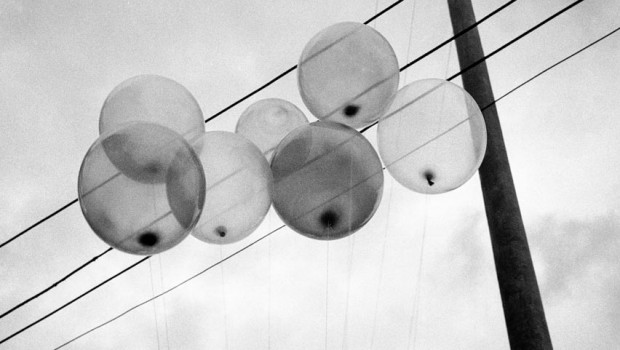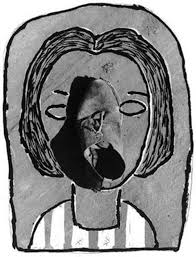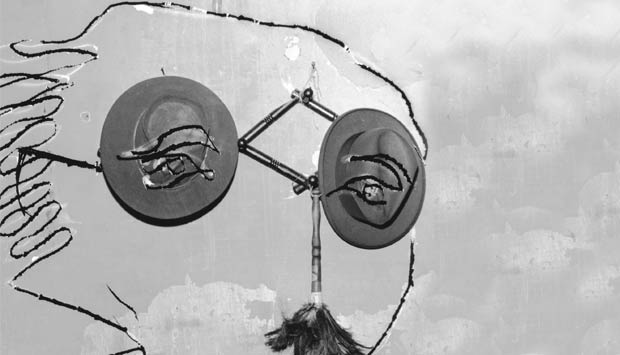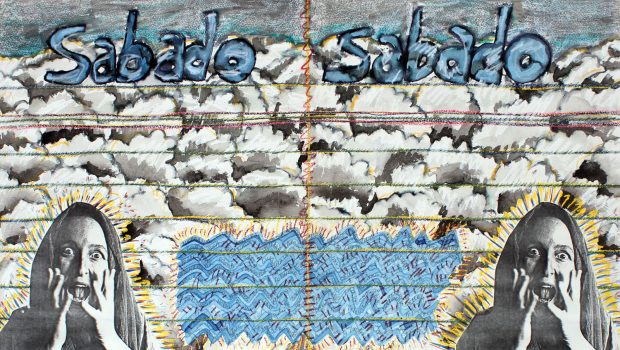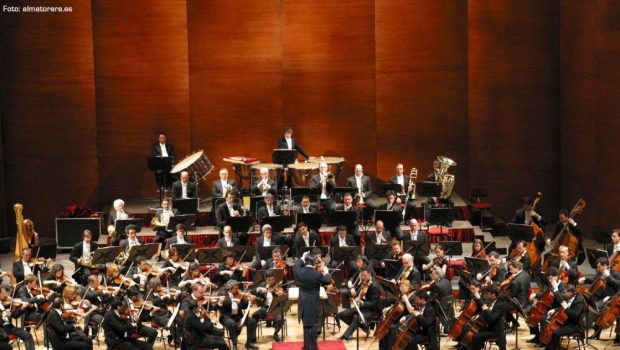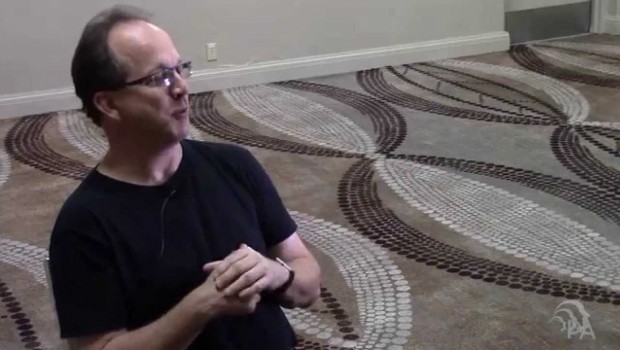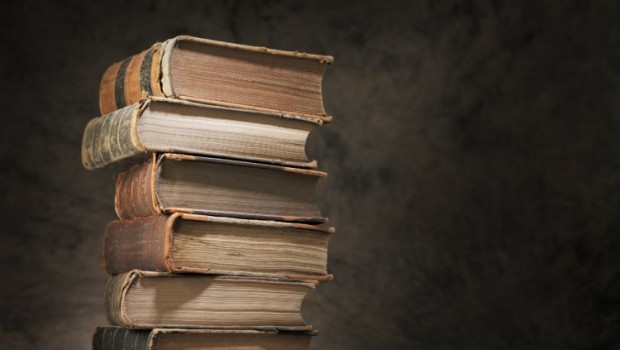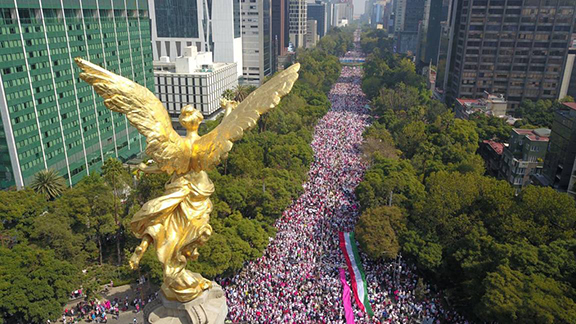Story of a Little Girl With a Big Mouth
Fernando Castro R.
The first time I saw Geraldo de Barros’s Menina do Sapato (1949) was in the catalog of the exhibition of the first Latin American Colloquium of Photography: Hecho en Latinoamérica (Mexico, 1978). Had I been Brazilian perhaps I would have recognized the author’s name as that of a renowned artist. But alas, I was a naïve young man and innocently assumed that the author was yet another enthusiastic youngster experimenting with the medium. In said catalog the photograph is undated, so I got the impression that it was recent. At the time I did not really think critically about art, I just liked or disliked works, and occasionally was able to voice a few opinions. What I liked about Menina do Sapato was the cleverness with which the opening of the shoe had been made to double as a gaping mouth on the cartoon-like face of a little girl vaguely resembling Mafalda or Little Lulu (the latter was available in Portuguese in 1949).
Although De Barros could have staged the old shoe in order to construct the image, more likely than not it was an object he found half-buried in the sand. The shoe part of the image agreed with the way I had learned to engage with the medium of photography; namely by looking, finding, and capturing. So it was easy to imagine myself encountering an old shoe on the beach and photographing it. However, De Barros’s work taught me that I could also draw on found images by scratching their negatives and painting over them. Nevertheless, decades went by before I dared to permanently alter my negatives the way he had because in my mind, that type of alteration was tantamount to damaging something almost as precious as reality itself. Instead, I modestly began experimenting with cutting my prints to make photo-collages. I never exhibited these collages, but a few friends who liked them ended up owning them.
In time, I also saw a social commentary and political dimension in Menina do Sapato that —not knowing the artist— I understood to be just my own interpretation. There is something very destitute about a single old discarded shoe acting as the girl’s open mouth. It is as if the abandonment and poverty of the shoe nuanced the drawing of the girl so that she was no longer the middle-class Mafalda or Lulú. Her disheveled hair, roughly drawn on the negative with a sharp tool, made her look like one of those pauperized indigenous girls that roam the streets of Lima, Mexico City, São Paulo, etc., clinging to their mother’s skirts and extending their small hands to passersby pleading, “Señor, una ayuda por favor.” That open mouth that in Edvard Munch’s Scream (1893) expressed a sort of existential howl of despair, in de Barros’s Menina was something as basic and passive as hunger, or as critical and active as asking “why?” The hollow of the shoe is so very dark, deep and loud.
In 1992 I started writing the essay “Crossover Dreams” for the Fotofest book Image and Memory: Photography from Latin American 1866-1994 (University of Texas Press: Austin, 1998). It was then that I perused the Hecho en Latinoamérica catalog once again and took another look at Menina do Sapato. I wanted the image to accompany my text, but how would I find it? Fortunately, somebody at the colloquium had had the brilliant idea to include a list of the participants and their addresses in the back of said catalog. Still thinking that Geraldo de Barros was a young man, I wrote to him speculating that perhaps by then he had become an engineer, a taxi driver, or both, and might not even be doing photography anymore. To my surprise, a month later I got a letter from his daughter Fabiana de Barros in which she thanked me for the interest in her father’s work and cordially agreed to send me the picture for use in my essay. It was only when I received the print that I found out that Menina do Sapato was made in 1949! Who was Geraldo de Barros? At the time, it was not possible to quickly google in order to find out who’s who, so answering the question involved a very slow process.
Although I did not know it at the time, the reason Geraldo had not answered my letter himself is that he had suffered a couple of traumatic strokes that impaired his speech and motor skills. My letter had arrived at a turning point in the dissemination of his work. Fabiana, who is also an amazing artist in her own right, had taken it upon herself to have her father’s photographic oeuvre receive the recognition it deserved. In Brazil people know his non-photographic works because many of them have a public presence, but his photographic work is not as well known. Fabiana was instrumental in arranging the exhibit Geraldo de Barros, Peintre et Photographe, a major retrospective at the Musée de l’Elysée in Lausanne, Switzerland in 1993. In 1994, she helped organize another exhibit at the Museum da Imagem e do Som de São Paulo: Geraldo de Barros, Fotógrafo. It was thanks to this last exhibit that I came upon the only book about him at the time: Fotoformas, Geraldo de Barros (Raízes: São Paulo, 1994). Both shows were based on the seminal 1950 Fotoformas exhibit at the Museu de Arte de São Paulo her father himself had curated when he was only twenty-seven years old —my own age when I first saw Menina do sapato.
The book that bore the same name as the exhibit, Fotoformas, Geraldo de Barros, contained installation photographs of the 1950 exhibit, and among the works that appeared in them was Menina do Sapato. The work was shown almost as a sculptural object: the print cut along the edge of the image and mounted on a solid support to stand by itself. In addition, the book listed other kinds of photographic techniques with which de Barros had experimented: multiple-exposures, cut-negatives, pinhole photography, etc. Some works were labeled “superposição da imagens no fotograma” —a phrase in which the term fotograma turned out to be a false cognate for “photogram.” Although in the French translation the aforementioned book used a better phrase —“superposition a la prise de vue” — (superposition at the moment of shooting) my confusion had begun.
The confusion was fueled by the fact that a Portuguese dictionary used in preparing the credits defined “fotograma” as “cada uma das imagens registradas en filme fotográfico ou cinematográfico” (each of the images recorded on photographic or cinematographic film). Needless to say, the English meaning of the word “photogram” is significantly different: namely, “a photographic image produced without a camera, usually by placing an object on or near a piece of film or light-sensitive paper and exposing it to light.”[i] Adding to the confusion was the fact that many de Barros fotogramas were very abstract and geometric and really looked like photograms. I believe I was not the only writer who took Geraldo’s fotogramas to be photograms, but I did not pay too much attention to the issue because the works that captivated me most were the ones described as “desenho sobre negativo com ponta-seca e nanquim.” (drawing on the negative with drypoint and ink).[ii] These are works like Menina do Sapato in which Geraldo scratched and painted the negative: Homenagem a Picasso (1949), Homenagem a Stravinsky (1949), O anjo (1948), and Cemitério do Tatuapé (1949).
Five years went by from the time I finished writing “Crossover Dreams” to the time Image and Memory was finally published in the fall of 1998. In the interim I had begun curating photographic exhibitions for Sicardi-Sanders, then a small Houston gallery committed to Latin American art. In 1997, when the gallery started making plans for Fotofest 1998, I suggested showing the work of Geraldo de Barros to Maria Inés Sicardi. Once again, I got in touch with Fabiana de Barros, who was delighted at the attention her father’s work was getting. In fact, she told me that in spite of his precarious health, her father had started doing photography again. Geraldo had suffered several strokes but his mind remained lucid, and with the help of an assistant he worked on a new series of photographic works titled “Sobras” (leftovers)—because they were made from the additional negatives found in his family and travel albums.
The 1998 exhibit at Sicardi-Sanders titled Geraldo de Barros: Traces on the Glass, paralleled the selection of works from his 1950 Fotoformas exhibit at the Museu de Arte de Sao Paulo. Fabiana arranged the production of a new numbered edition of her father’s works. One of the many illustrious guests that Fotofest ’98 brought to Houston was A.D. Coleman, a critic who is not easily enthused. After seeing the De Barros exhibit he told me privately that it was the best show he had seen at Fotofest that year. Unable to travel on account of his poor health, De Barros did not see his first solo exhibit in the United States. Shortly after the exhibit at Sicardi-Sanders, Geraldo de Barros (1923-1998) passed away.
Although I never met him, his death caused me great sadness and left me with unanswered questions. Why had he stopped practicing photography for forty-four years? To find an answer, we have to go back a few decades. After the 1950 Fotoformas exhibit and partly as a result of it, de Barros spent a year in Europe. That journey changed his artistic vision. He met Concrete artists Max Bill and Otl Aicher, and the meeting reaffirmed convictions he had already been entertaining in São Paulo. On his return to Brazil in 1952 he joined other artists as a signatory of the Ruptura Manifesto of Concrete Art. A portion of this document states the program of what Concrete artists were to avoid and what they were to practice.
THE OLD IS
THE NEW IS
|
Although photography is not mentioned in the manifesto, it is certainly implicated as the kind of visual realistic representation that was developed since the Renaissance and described as “naturalism.”[iii] Another section of the Ruptura Manifesto reads, “because the scientific naturalism of the renaissance—the old process of rendering the (three-dimensional) external world on a (two-dimensional) plane—has exhausted its historical task.” To put it mildly, Concrete artists were to avoid all kinds of figuration; i.e., mimetic art. By and large they produced artworks that were abstract but geometric; works that represented nothing but themselves. As a result of its chemistry and premeditated optics, photography not only points beyond itself (it is indexical), it also mimics the visual world. Consequently, it is an unlikely medium for Concrete artists.

Menina do sapato standing up on a pedestal in the 1950 exhibit
at the Museu de Arte de Sao Paulo (MASP).
Of the works de Barros produced for his 1950 exhibit, only his most abstract works seemed to be congruent with the premises of Concretismo; that is, non-mimetic, non-indexical works, that represent nothing but themselves. Some critics and curators took these works to be precisely the ones described in the 1994 Fotoformas book as “superposição da imagens no fotograma.” Judging by the abundant comparisons of Geraldo’s work to that of Man Ray and Laszlo Moholy-Nagy in the literature, the mismatch of meanings had led not only myself, but also a few others, to believe that Geraldo de Barros had produced photograms. But that error also makes one draw the wrong conclusions about the connection of these particular works to Concretismo; which is in fact, a later occurrence in De Barros’s life.
Although a bona fide photogram is still indexical, because there is no camera involved in its production, the optical portion of the photographic process that gives the medium its mimetic power is absent therein. Indeed, a photogram is a mere silhouette —closer to a shadow than to a mimetic depiction. A shadow, as we know, may or may not resemble (mimic) the object that projects it. Conversely, two different objects (say, a coin and a tennis ball) can project the same shadow —a well-known fact to those who amuse us by making figures with the shadows of their own hands. Finally, the same object may project two very different shadows. Indeed, if you were to make a photogram using a cylinder, it could leave behind a white form shaped as a rectangle or a circle depending on how it sits on the photographic paper (as the picture below shows). The proponent of de Barros’ fotogramas as photograms, and hence, as examples of Concrete Art, gains a modicum of support from these conclusions. The shapes used to make them, he/she could argue, would be tantamount to rulers or templates.[iv]
In addition, if a silhouette in a photogram is a rectangular geometric form, it refers to the shape rather than to the box that produced it (after all, many objects could have produced the same form). So photograms are ideally suited to have that disconnection with visual reality that Concrete artists found so appealing because they wished their art to express only the “quintessential values of visual art (space-time, movement and material).” The problem of this line of thinking is that —as I will show below—Geraldo did not produce photograms. Whatever he did in photography during the 1946-1950 period may have been influenced by Concrete art, but did not follow its dictates. More than likely, De Barros’ ideological commitment to Concrete art did not take place until his return from Europe in 1952.
De Barros did profess the ideology of Concrete art in the decade of the fifties and even practiced its social convictions of making art accessible to many. In fact, he established Unilabor, a cooperative factory that produced inexpensive furniture with Bauhaus type designs of his own creation. However, like many other Brazilian artists who bought into Concretismo, De Barros evolved out of it. His own evolution went through Pop Art.
Recently, at the new building of Sicardi Gallery on West Alabama Street a more modest exhibition, a subset of the 1998 and the 2008 exhibits, was shown for Fotofest 2016. It was that exhibit that rekindled these reflections. Since 1998, at least four books, several catalogs, and one biographical documentary have contributed information and reflections about de Barros’s life and work. I reviewed the numerous essays and documents now available and looked at the images once again, paying more attention to the technical details. In my 2008 curatorial essay I decided to follow the logic imposed by a taxonomy of the different techniques de Barros used to produce his photographic work. When I came upon those described as “superposição da imagens no fotograma,” I was bewildered by the fact that in the gallery documents there were entries for “editions” of those works. How could that be, when photograms are unique? There are indeed artists who produce editions of photograms with works that are sufficiently similar albeit not identical, or re-photograph them and make third-generation prints. In Geraldo’s case, the prints in each edition are identical (as much as prints from the same negative can be). I sought clarification from Fabiana de Barros and after a few emails, this much was clear: there are negatives of many images that were formerly labeled “superposição da imagens no fotograma.” Upon closer inspection, it became clear that many of those negatives are really multiple-exposures and not re-photographed photograms. One can recognize the objects from which De Barros so cleverly abstracted geometric shapes: for example, tops of buildings seen from below. Still there are a few, harder to decipher, that really look like photograms; but Fabiana insists there are first generation negatives of them.[v] I asked her if perhaps her father made photograms that he later re-photographed to get a negative, but she firmly states her father never did this sort of thing. It was misleading to label these very abstract and geometric works “fotogramas” (in spite of the fact that it was correct in Portuguese to do so) as was the case in that very first book that came into my hands: Fotoformas, Geraldo de Barros (Raízes: São Paulo, 1994). But the mystery has been cleared up.
So the face of Menina do Sapato came to have a different expression: one of mischief, and her open mouth can become one of surprise. After wearing our shoes down by walking along many paths, we come to a surprising point of our lives. If what I once believed to be photograms are actually double exposures, in spite of their abstract geometric appearance, they have a semantic component based on mimicking something other than itself that existed on the other side of the camera lens. In the end, these “fotogramas” only differ from Menina do Sapato in that the geometric shapes are harder to decipher than a shoe. Even in actual photograms the indexical nature of the medium is an inconvenience to the Concrete agenda —after all, shadows are of something. Was this inconvenience the reason De Barros gave up photography as an artistic medium for forty-four years? Art and photography have taken many detours since the 1952 Ruptura Manifesto. Some of these detours are proof that “naturalistic” representations have not “exhausted their historical task.” Geraldo de Barros himself realized it as he moved from Concrete Art to Pop Art, and in the last years of his life, back to photography —in his own special way.[vi]
Fabiana was eight years old when her father drew Menina do sapato; maybe her father was thinking of her as he scratched the negative. She has played a central role in clarifying her father’s work. In her role as daughter, artist, and curator, Fabiana has become the oracle who elucidates the mysteries behind her father’s deceptively simple works.
 Fernando Castro es artista, crítico y curador. Estudió filosofía en la Universidad de Rice con una beca Fulbright. Es miembro de la comisión técnica del FotoFest y del consejo consultivo del Center for Photography de Houston. Editor y colaborador de las revistas Aperture Magazine, Art-Nexus, Literal Magazine y Spot.
Fernando Castro es artista, crítico y curador. Estudió filosofía en la Universidad de Rice con una beca Fulbright. Es miembro de la comisión técnica del FotoFest y del consejo consultivo del Center for Photography de Houston. Editor y colaborador de las revistas Aperture Magazine, Art-Nexus, Literal Magazine y Spot.
[i] This definition comes from the built-in dictionary in my MacBook Pro laptop.
[ii] Whenever a writer compares these works by Geraldo de Barros to those of Man Ray (“rayograms”) or to László Moholy-Nagy (photograms), the comparison is symptom that he/she is entertaining the misconception that the former made photograms.
[iii] Snyder, Joel. “Picturing Vision.” Critical Inquiry, Spring 1980. Snyder has described the evolution of the “photographic look” vis-à-vis the paradigm of visual perspective developed in the Renaissance that has dominated our model of painting and seeing.
[iv] There is a different set of de Barros’ photographs that deserve separate consideration: the ones he made by placing perforated computer cards on the negative carrier and letting light pass through the rectangular slots. He then proceeded to vary the height of the enlarger head to print rectangles of different sizes. The product was unique unrepeatable prints.
[v] Perhaps in order to clarify some of these issues Fabiana de Barros included pictures of the actual negatives of these “fotogramas” in the recent book Geraldo de Barros e a Fotografia. Sao Paulo: Instituto Moreira Salles / Edicoes Sesc: 2014. In my opinion, the negatives show that they are not of photographs of photograms.
[vi] There is evidence that Geraldo de Barros himself did not want his Fotoformas to be linked to the Concrete art ideology. His daughter Fabiana wrote, “A questão do concreto é fundamental na trajetoria do artista, embora tenha sido muitas vezes contestada pelo próprio, que, em 1953, se enfureceu com Max Bill —seu grande mestre— quando ele rotulou suas Fotoformas de “concretas.” Geraldo não aceitava que suas fotos fossem chamadas de concretas; seus quadros sim, mas suas fotos não.” (Geraldo de Barros: Isso. SESC. Servicio Social do Comercio. Sao Paulo: 2013. Page 12). {This issue of concrete art was fundamental in his life, though often contested by him as an artist, such as in 1953, when he became infuriated with Max Bill —his great teacher— when the latter labeled his Fotoformas as “concrete”. Geraldo did not accept his photographs being called concrete; his pictures [paintings], yes, but not his photographs.}
Posted: May 22, 2016 at 8:13 pm


